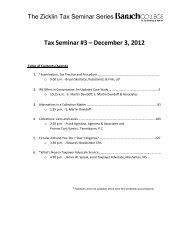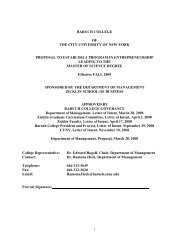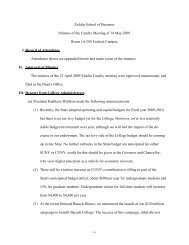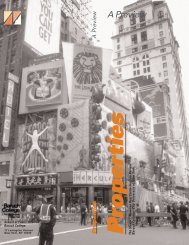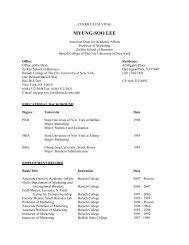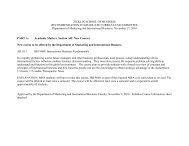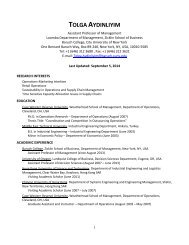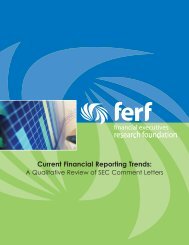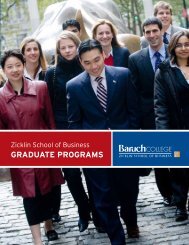Valueat-Risk
Forecasting the Return Distribution Using High-Frequency Volatility ...
Forecasting the Return Distribution Using High-Frequency Volatility ...
- No tags were found...
Create successful ePaper yourself
Turn your PDF publications into a flip-book with our unique Google optimized e-Paper software.
as a plausible benchmark. All the statistics used in the forecast comparison point to the conclusion<br />
that realized volatility models do not outperform the GARCH(1,1) benchmark, even at the shortest<br />
horizon of 1-day. In fact, the realized volatility models are outperformed by the benchmark in the<br />
center of the distribution (as evaluated by the WQS) at the 5-day horizon. In addition, the quantile<br />
models based on the smoothed squared returns have also similar accuracy relative to the benchmark,<br />
thus suggesting that for bond returns there is no added value in considering the high-frequency<br />
volatility measures. The only case in which the quantile models outperform the benchmark is when<br />
evaluating the 1% quantile for which several realized volatility models outperform the benchmark.<br />
However, both approaches provide similar results in terms of interval coverage and average length<br />
of the intervals.<br />
6 Discussion<br />
The results discussed above suggest that the realized volatility quantile model provides more accurate<br />
distribution, quantile and interval forecasts compared to the GJR-EDF and GARCH(1,1)-EDF<br />
when predicting the S&P 500 returns at short horizons. To explain these findings, we construct<br />
measures of volatility, skewness and kurtosis that characterize the distribution of financial returns<br />
based on the estimated quantiles of the different models.<br />
An advantage of deriving these measures<br />
from the quantiles is that they inherit the property of being conditional on the information<br />
available at the time the forecast is made. In addition, the quantile-based measures are typically<br />
regarded as robust to the effect of large returns and outliers compared to averaging powers of the<br />
returns. As a quantile-based proxy for volatility we use the Interquartile Range (IQR) which is<br />
defined as IQR t,h = q t,h (0.75) − q t,h (0.25), where IQR t,h denotes the IQR forecast made in day<br />
t at the horizon h and q t+h (τ|F t ) represents the conditional quantile at levels τ = 0.25 and 0.75.<br />
The IQR can also be interpreted as the 50% forecast interval for the returns which was statistically<br />
evaluated in the previous Section. In addition, we consider the 95% forecast interval obtained as<br />
q t,h (0.975) − q t,h (0.025), which relies on the extreme quantiles and might highlight relevant differences<br />
between the forecasting models in the tails of the return distribution. Furthermore, we follow<br />
Kim and White (2004) and define robust skewness and kurtosis measures based on quantiles. The<br />
h-day ahead Skewness forecast in day t, denoted by SK t,h , is defined as<br />
SK t,h = q t,h(0.75) + q t,h (0.25) − 2q t,h (0.5)<br />
IQR t,h<br />
(17)<br />
while the Kurtosis forecast, denoted by K t,h , is obtained as<br />
K t,h = q t,h(0.975) − q t,h (0.025)<br />
IQR t,h<br />
− 2.91 (18)<br />
Figure (2) shows the time series forecasts of these four quantities for the S&P 500 futures returns<br />
with h = 1 from January 3, 2000 until September 9, 2009 (2419 days). We confine the comparison<br />
to the GARCH(1,1)-EDF, the GJR-EDF, and the quantile model with regressors given by rv t , rv w t<br />
and rv m t . The realized volatility RV t was found to perform similarly to the other realized volatility<br />
measures. Looking at panel (a) and (b) of the Figure, it appears that the quantile model (right plot)<br />
17



